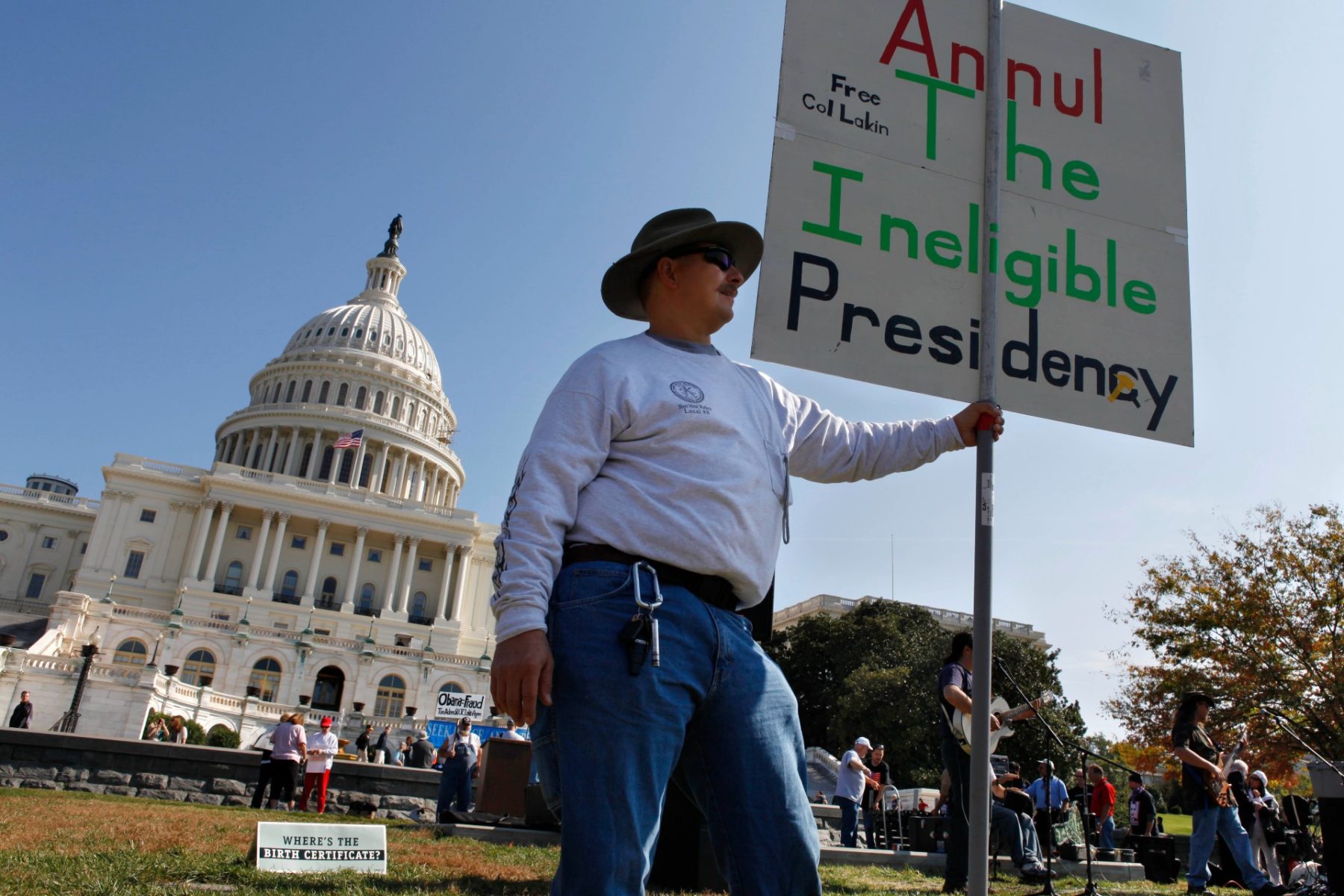
In August 2010, journalist Jane Mayer introduced readers of The New Yorker to Charles and David Koch in a feature investigation into “the billionaire brothers who are waging a war against Obama.” The country was about three months away from voters giving Republicans a net gain of 63 House seats in a 2010 midterms wave that vaulted the Tea Party into power.
The Koch brothers had already poured more than $100 million into right-wing causes over the past two decades—some $48 million in political spending could be identified from the Charles G. Koch Foundation between 1998-2008, Mayer wrote. The blog Think Progress had been tracking the Kochs’ electoral activities throughout 2009, with journalist Lee Fang calling the Kochs “the billionaires behind the hate” in a December post that flagged their groups’ financing of extremist rhetoric to distort the health care reform and clean energy debates. At Tea Party events, Democratic lawmakers had been hanged in effigy, and the Affordable Care Act was compared to the Holocaust at an event held by Patients First, a subsidiary of the Koch-founded group Americans for Prosperity (AFP).
But aside from Think Progress, along with “dark money” research groups like the Center for Media and Democracy and climate watchdogs like the Natural Resources Defense Council, not many mainstream news outlets focused on the Kochs during the 2009-2010 rise of the Tea Party. Some headlines and blog posts from those years can be surveyed in a chronological selection from the resource KochDocs, coordinated by researcher Lisa Graves: for example, a Washington Post Politics item in August 2009 briefly mentioned, in its second half, the Koch network’s funding of groups organizing that summer’s Tea Party protests.
There were a few more mentions, but hardly commensurate with the scope of the Kochs’ spending to advance corporate-favored policies through ostensibly grassroots protests that dominated the national political scene. News items on AFP’s funding of rallies ran on NPR’s Morning Edition in February 2010 and in the Christian Science Monitor and Politico in September. A Frank Rich NYT op-ed in August 2010 called out the Kochs’ sizable astroturf spending behind the anti-tax, libertarian-tinged rallies. Magazines like The Atlantic mentioned the Kochs’ alliance with oil companies, and Rolling Stone ran an exposé. When tax records were eventually released, they confirmed that millions of dollars in spending by the Kochs that cycle ginning up Tea Party protestors went undisclosed.
By the 2012 cycle, the Kochs and their network of groups were spending an estimated $400 million to defeat Obama, Democrats, and candidates who opposed corporate subsidies and tax cuts for the superrich. After the Republicans took the Senate in 2014 with the support of another hefty push of outside spending from Koch-tied groups, the network’s planned outlay for the 2016 cycle grew to nearly $900 million. The death of David Koch in 2019 occasioned the New York Times to say that the Kochs’ dark money spending had “shaped American politics.” Lee Fang made the case then: “Efforts made by Koch, largely ignored by the mainstream press, primed key states to elect a GOP president. Trump was simply the beneficiary.”
Jan. 6 and the Tea Party Patriots
This week, the country will mark the anniversary of the Jan. 6 attacks on the Capitol Building with countless essays being published about the problems of the stickiness of the “Big Lie” among conservatives and the election suppression efforts of pro-Trump Republicans, laying the groundwork for U.S authoritarianism. The Koch network has direct ties to those involved in the day’s events through the Freedomworks-organized Tea Party Patriots, which helped coordinate the Stop the Steal protests that happened before protesters marched on the Capitol.
Last month, two-thirds of Republicans polled continued to believe the false claim that the election was stolen, and one in three Americans overall questioned the outcome of the 2020 presidential election, according to another poll conducted in December.
Many anti-democratic features of the “Big Lie” were already embraced by conservatives during the Tea Party summer of 2009, when protestors claimed that Obama’s presidency was illegitimate witth baseless claims that he was born abroad. By early 2011, half of Republican voters incorrectly believed Obama was not born in Hawaii. In August of last year, an NPR piece was comfortable in describing Trump’s renewed “birther” attacks on Sen. Kamala Harris as blatantly racist.
More recently, the QAnon conspiracy movement, supported by some members of the House Freedom Caucus, provided fuel for MAGA rallies and the right fringe, and by May of last year, one in four Republicans believed in QAnon’s theories. Freedom Caucus founder and past chair, conservative Republican Rep. Mark Meadows of South Carolina, became Trump’s chief of staff and a key player in the attempted coup.
Some Koch network-supported Republicans elected in the 2010 Tea Party wave quickly rejected democratic principles by gerrymandering districts to give their party’s candidates an edge in future elections. The Koch network’s financial backing helped propel conservative Republicans like Scott Walker into office as the governor of Wisconsin, and the Walker-led state GOP moved the next year to pass district maps so gerrymandered that by the 2018 cycle, Republicans held two-thirds of Assembly seats despite winning 47% of votes. Several prominent “never-Trumpers” who have been featured in the media, like columnist Mona Charen, policy editor at The Bulwark, cheered Walker’s ascendancy in 2011 in putting down labor-led state protests. Her colleague conservative talker Charles Sykes remained close with Walker through a 2012 recall effort, belatedly admitting a year ago that he’s “not proud” of stoking hyperpartisanship by promoting state Republicans like election objectors Reps. Scott Fitzgerald and Tom Tiffany.
In early 2020, Koch operatives announced that their network would surpass its own spending record supporting down-ballot conservatives that cycle with undisclosed funding from right-wing billionaires. True to form, this year, Republicans in Georgia, North Carolina, Ohio, and Wisconsin have continued their gerrymandering pushes.
The Possibilities of Public Campaign Financing
Within the limits of the 2010 Citizens United ruling, experts in democracy have repeatedly raised a public campaign financing option as an effective program for curbing Big Money influence in elections. Public financing programs, such as matching ratios for small donations given by qualifying voters, support candidates with less corporate-tied and rich donor backing, and open up the field for candidates who don’t have a rolodex of wealthy supporters.
In the latest U.S. House proposal, participating candidates for Congress would have to raise $50,000 from individuals to demonstrate their viability, and then they could be eligible to have donations matched 6-to-1 by public funds, raised out of a surcharge on corporate penalties. Over the past six election cycles since Citizens United, having an option that helped more grassroots-supported candidates run for Congress could have energized far more voters than the 56% of the voting-age population who cast a ballot in the 2016 presidential election.
A leaked conference call recording obtained by the New Yorker last year, which included a policy adviser to Sen. Mitch McConnell and Kyle McKenzie, an operative with the Koch network advocacy group Stand Together, revealed fretting that the Democrats’ proposed election reform measures in the For the People Act would prove popular with voters across the political spectrum.
The last time Democrats had a window to create such an option was in 2009, when they briefly enjoyed a filibuster-proof 60 vote majority in the Senate, but a bipartisan House bill that had been favorably reported out of committee died without a House vote before Republican Rep. John Boehner took the gavel. One of the bill’s cosponsors, Rep. John Larson (D-Ct.), told me in a phone interview last year that Democratic members were consumed with defending their votes on the Affordable Care Act in the run-up to November 2010, and that rank-and-file Democratic reps were worried about being challenged on their fundraising practices if a public campaign financing option was passed.
When Congress has been deadlocked, many state governments with a Democratic trifecta have been open to reforms to strengthen democratic practices, but even in those cases incumbents have been slow or unwilling to experiment in public campaign financing. While major cities including New York City and Los Angeles have had public financing options in place for decades for municipal government offices, as have a couple of states like Connecticut and Maine, over a dozen other states with Democratic trifectas have not adopted robust public financing programs. (New York is slated to offer a statewide small-donor match, one long-delayed under former Gov. Andrew Cuomo, after the 2022 state elections.)
A Critical Senate Rules Change
Among many measures filibustered by Republicans in the 111th and 112th Congresses of 2009-2012 was the DISCLOSE Act, which would have required disclosure of the original funding source of spending in elections by groups like the Koch network’s Americans for Prosperity that are nonprofits and thus not required to disclose their donors. After being filibustered for the second time in September 2010, with 59 Democratic votes in favor of proceeding to debate, Democratic congressional leaders embraced raising and spending dark money for their party groups—and last election cycle, around $514 million out of $1 billion total in dark money favored Democratic candidates, compared to $200 billion favoring Republicans.
In January 2011, Sen. Joe Manchin was one of 46 Democratic senators who supported a “talking filibuster” requirement, saying it would help the Senate better represent the views of regular Americans. But under the rules as interpreted by leadership then, the resolution would have required two-thirds support in the chamber to pass.
This month, Chuck Schumer has pledged to move forward with a “carve-out” for senators to be able to consider election reform legislation—if, that is, Democratic holdouts Manchin and Kyrsten Sinema are willing to support an exception to the Senate rules’ 60-vote requirement for breaking a filibuster that has been in place since 1975. Three major election protection packages were filibustered four times by Republicans last year. Which voting rights legislation might advance, between the Freedom to Vote Act and the John John Lewis Voting Rights Advancement Act of 2021, is likely being negotiated now with Senate leaders, the White House, and the two conservative holdouts. In September, Manchin stripped out a number of measures from the For the People Act in designing the Freedom to Vote Act, limiting any public financing option to just the U.S. House. The next steps for the provisions won’t be clear for a couple more weeks before the Jan. 17 deadline set by Schumer for voting rights legislation.
As Congress gears up again and battles play out over voting rights legislation this month, Democratic members of Congress can remember that after failing to pass a public campaign financing option or election spending transparency, Senate candidates lost at least nine contests by fewer than five percentage points over the next five elections.
